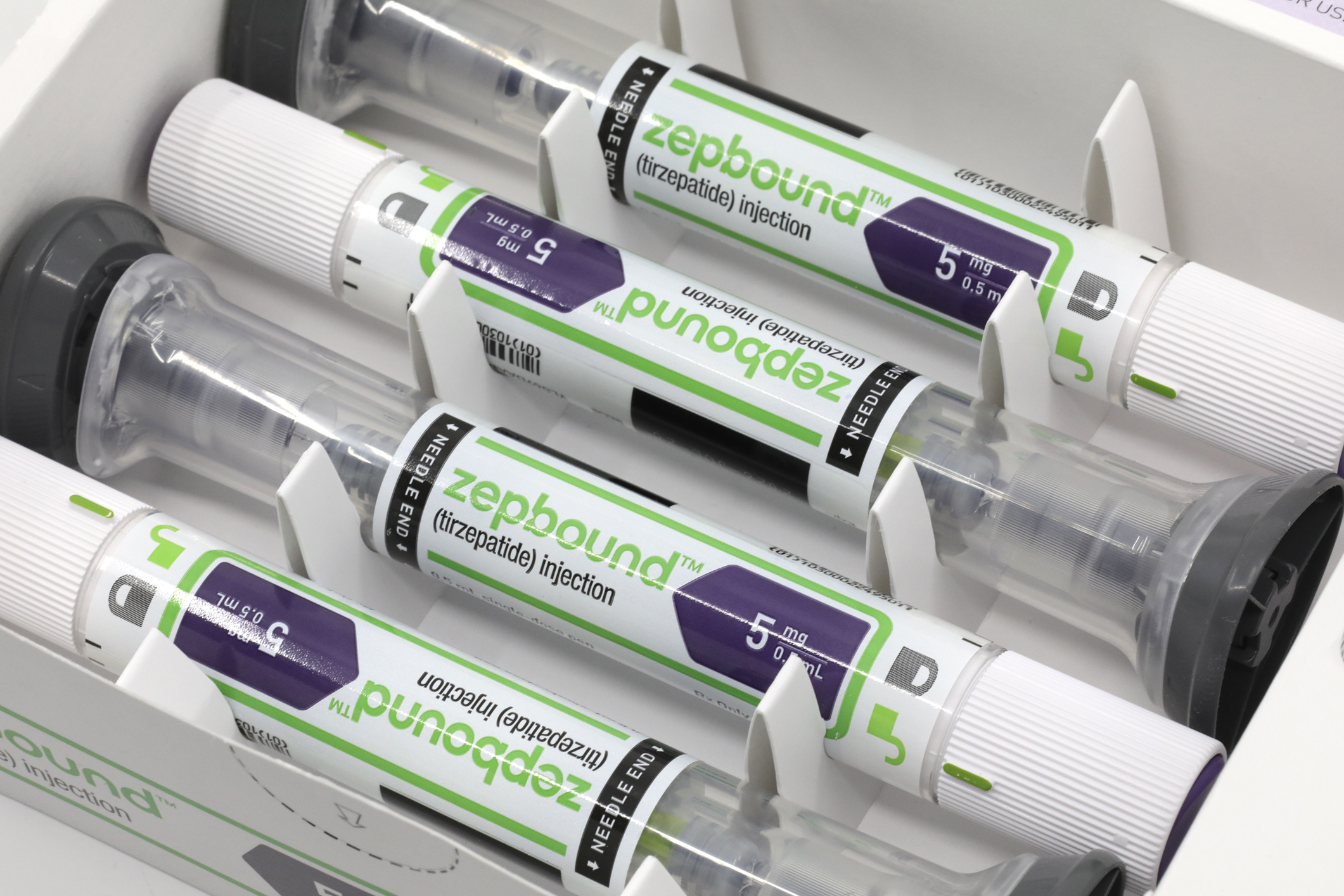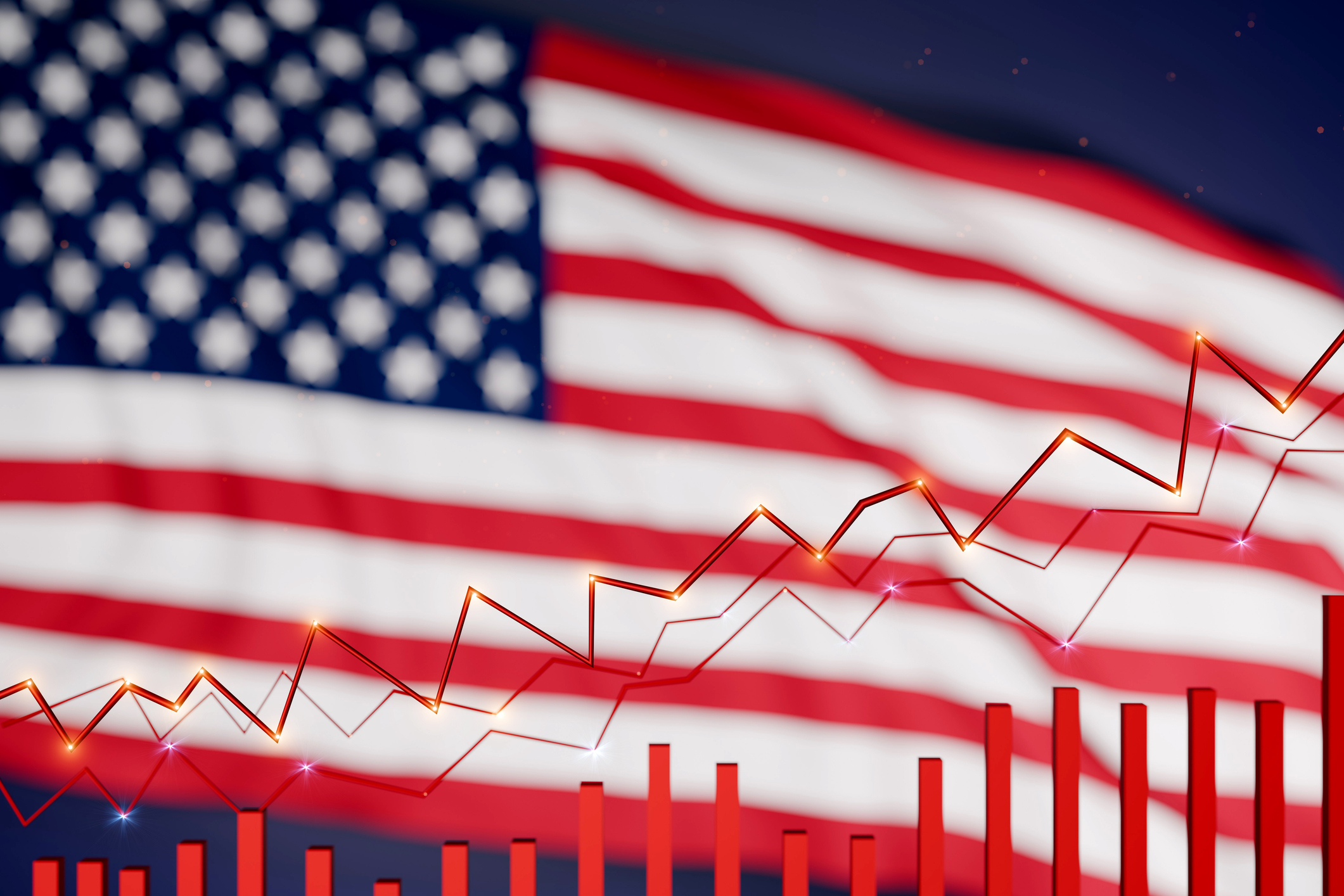Fat profits: should you invest in weight-loss drugs?
The latest weight-loss treatments could transform public health and the world economy. Should you invest?


When considering the top stocks, funds and trusts to invest in, are the pharmaceutical and biotech companies behind weight-loss drugs worth a look?
“In 2021, Lisa Chen, a software engineer, started a new weight-loss medication,” says Todd Gagne on his Substack page Wildfire Labs. Six months later, she had stopped buying a daily muffin. Then she cancelled her beer-of-the-month subscription and kicked her late-night takeaway habit. By 2023, her grocery bill had dropped 40%, her alcohol spending 85%, and her Amazon impulse purchases 60%. “Our economy is built on impulses,” Gagne writes. “What happens when a weekly injection regulates those impulses?”
Food and drink firms are already asking themselves this very question in response to the “Ozempic earthquake”. Coca-Cola has reassured investors that two-thirds of its portfolio is made up of low and zero-calorie products. It isn’t bad news for everyone, though. Healthcare companies are investing huge sums in the race for market share. No wonder, when you consider the scale of the opportunity.
MoneyWeek
Subscribe to MoneyWeek today and get your first six magazine issues absolutely FREE

Sign up to Money Morning
Don't miss the latest investment and personal finances news, market analysis, plus money-saving tips with our free twice-daily newsletter
Don't miss the latest investment and personal finances news, market analysis, plus money-saving tips with our free twice-daily newsletter
More than 50% of over-25s worldwide will be overweight or obese by 2050, according to The Lancet. With obesity-related illnesses filling up hospital beds and keeping people out of work, it is an economic issue as well as a health crisis. The market is vast, and the stakes are high. Furthermore, there is still a long way to go before sales reach their full potential.
Wegovy and Zepbound, the two leading weight-loss drugs, together sold less than $5 billion in 2023, according to pharmaceutical intelligence company Evaluate Pharma. This is just a fraction of the $130 billion Evaluate expects the overall market to be worth by 2030.
While these drugs might appear to be a new discovery, they have actually been around for some time. The hormone they contain – glucagon-like peptide-1 (GLP-1) – was discovered in the 1980s. It helps lower blood-glucose levels and has been used to manage type-2 diabetes since the mid-2000s. Ozempic, now a household name, is a GLP-1 diabetes medication.
In June 2021, Danish pharmaceutical giant Novo Nordisk received approval for Wegovy (a higher-dose version of Ozempic) for use as a weight-loss medication. Between then and its record peak in June 2024, the share price almost quadrupled as investors weighed the long-term financial implications. The surge briefly made Novo the most valuable company in Europe.
Novo’s US rival Eli Lilly developed a rival drug, Zepbound, in 2023, and also saw its valuation soar. For reasons we will delve into, Novo’s stock has since fallen back while Lilly has emerged as the leader.
Behind the weight-loss drugs boom
Many new drugs simply improve on or replace existing ones, limiting the scope for growth as the market remains roughly the same size. But these treatments are different – there has never been an effective treatment for obesity. “Every now and then, you get a genuinely interesting innovation,” says Ailsa Craig, manager of the International Biotechnology Trust. Then, “you are generating sales that weren’t there before”.
The excitement around these drugs is easy to understand – they are incredibly effective. Patients on GLP-1 injections report weight loss of 15%-20% per year with relatively benign side effects. Previous weight-loss drugs only managed 5%-10%, and the side effects were far more worrying. One drug, Fen-phen, was taken off the market after being linked to pulmonary hypertension and heart-valve problems.
The exact scale of the market is difficult to predict. These drugs are expensive, so much will depend on whether public health systems and private insurers are willing to pay for them. Some patients are self-funding, but not everyone is able to afford it. In the US, for example, it will set you back $6,000 a year. Uptake should increase as prices start to come down, but supply bottlenecks are also creating challenges.
The scale of the market will also depend on how widely these drugs can be used in treating other conditions. We already know they are effective in reducing cardiovascular risks. A clinical trial run by Novo Nordisk in 2023 showed that obese patients who went on GLP-1s experienced a 20% reduction in heart attacks and strokes.
Links are starting to emerge in other areas, too. Further research is needed, but the drugs may reduce diabetics’ risk of kidney failure, slow brain shrinkage in Alzheimer’s patients, and improve symptoms among those suffering from addiction, anxiety and depression. Some overweight people who previously struggled with infertility have even reported “Ozempic pregnancies”.
“Our long-term enthusiasm for this class of drugs does not stem from the impressive weight loss of the current offerings… but rather from the positive impact on other metabolic diseases, both in terms of symptom relief [and] prevention of events,” says Trevor Polischuk, manager of the Worldwide Healthcare Trust.
“This includes cardiovascular benefits, improved liver function, improved kidney function, reduction of sleep apnoea, and even pain associated with arthritis. And that is just today. Further innovation… could create super medicines.” In Polischuk’s view, these drugs have the potential to help “hundreds of millions” of patients. He says we are just at the start of this phenomenon.
The race for market share
Today, Novo Nordisk and Eli Lilly are the undisputed market leaders. Of the two, Lilly has the edge with a more effective approved drug and a more diversified development pipeline. Head-to-head data shows that Zepbound delivers an average weight loss of 20% after 72 weeks, versus Wegovy’s 14%. Still, the theme has further to run, and a number of rival firms are hoping to gain market share.
“Although the existing drugs are very effective, they are not perfect,” says Craig. So “the drugs being taken today might not be the ones used in the future”. More than half of patients drop off existing treatments after a year, often citing side effects such as vomiting. To get the cardiovascular benefits, patients need to keep the weight off.
The industry is racing to develop therapies that shift more weight with fewer adverse effects. This could involve combining GLP-1s with other molecules such as amylin, another hormone that plays a role in regulating blood sugar levels. Companies are also racing to make weight-loss pills, which would offer a more convenient alternative to injections. Pills may also be easier to manufacture and distribute globally, helping alleviate bottlenecks in the market.
Eli Lilly’s “promising new tablet” orforglipron could constitute the next phase of the pharma industry’s battle, says Robert Cyran on Breakingviews. Trial results published on 17 April showed patients on 36 milligrams of orforglipron experienced weight loss of 8% over a 40-week trial period. The fact that pills typically result in less dramatic weight loss than injections may not matter.
“Some are afraid of needles and injectable drugs usually require refrigeration, a hassle for users. So providing effective tablets should both increase the number of patients willing to give the treatment a go and actually stick with it.”
High stakes
Lilly says it could launch the pill as soon as 2026, if approved. Investors have responded positively so far, adding $100 billion to the company’s market value after the trial results were published. This highlights what is at stake in the race to develop next-generation drugs. The rewards are potentially significant for those that can develop effective treatments at pace.
By the start of the next decade, a third of the market will be represented by firms other than Novo and Lilly, according to financial data groups Morningstar and Pitchbook. Roche, Amgen, Pfizer and AstraZeneca all want a slice, alongside private companies such as Boehringer Ingelheim. Smaller acquisition targets like Structure and Viking (both listed) are also in the race.
Almost every major pharmaceutical company is looking to bring a weight-loss drug to market, often by acquiring candidates from the biotech sector. Those businesses that are successful in developing the most effective next-generation drugs should be able to grow their market share. But there are risks. Expectations are high, meaning disappointing trial results can lead to big swings in value.
Novo’s share price suffered last year after its next-generation amylin candidate CagriSema performed worse than expected in phase-three tests (the final stage of clinical trials). Although it achieved weight loss of 23% after 68 weeks, this was below the 25% expected. It wasn’t enough to persuade investors that the drug could handily outperform Eli Lilly’s Zepbound.
The market is also incredibly competitive. Paul Major, manager of the Bellevue Healthcare Trust, points out that the number of next-generation candidates is “huge”, with “scores of molecules” in clinical trials. “Sooner or later, GLP-1 drugs will become all about price.”
However, prices coming down could also increase the size of the market. Medicare and Medicaid, US government health insurance programmes, will only reimburse the cost of the drugs if patients have another condition such as cardiovascular disease. They are just too expensive. Patients who aren’t covered through their insurance can self-fund at a 50% discount on what the insurers pay, but that is still about $6,000 per year.
“I think insurers understand there is a very strong case for helping patients lose weight in terms of lowering long-term healthcare costs,” says Karen Andersen, sector director at Morningstar. “As prices come down, it could increase the number of insurers – including government insurers – that are willing to cover it.”
How to invest in weight-loss drugs
Eli Lilly (NYSE: LLY) is currently the market leader with the most effective licensed drug, based on head-to-head data. But investors will need to decide if they are willing to pay up for it. Lilly’s shares are on a forward price/earnings (p/e) ratio of almost 40. Meanwhile, Novo Nordisk (Copenhagen: Novo-B) looks much cheaper than a year ago after recent share-price falls. Its forward p/e ratio is 15.
Polischuk thinks Lilly is more attractive than Novo. It is the largest position the Worldwide Healthcare Trust (LSE: WWH) has ever held, at around 11% of the portfolio. Meanwhile, the trust sold out of Novo earlier this year after seeing a “lack of upward inflection in US prescription trends for both Wegovy and Ozempic”.
Investors could also look at some of the firms vying for a share of the next-generation market. Roche (Zurich: ROG) recently made a deal with Danish biotech company Zealand Pharma, for example, giving it exposure to an amylin candidate. Even prior to this deal, it had a couple of drugs in mid-stage development. Morningstar thinks Roche’s shares are currently undervalued. “I think they are a pretty strong candidate for being a bigger competitor once you get to the 2029 time frame,” says Andersen.
The Polar Capital Global Healthcare Trust (LSE: PCGH) has Roche in its top-ten holdings alongside market leaders Lilly and Novo. The Worldwide Healthcare Trust also has exposure to next-generation names through AstraZeneca and Pfizer, as well as its position in market leader Lilly.
The biotech sector, highly risky but potentially very lucrative, also looks interesting and could merit some diversified exposure. Most of the innovation is in this area. “We have this ecosystem in the pharma industry for therapeutic drugs whereby innovation tends to come from the biotech companies… and especially lately, those companies tend to get acquired by big pharma,” says Craig. “Ten years ago, 70% of the new drugs approved emanated from big pharma’s research and development (R&D). Last year, it was the inverse – 70% of new drugs approved came from biotech.”
Listed biotech companies such as Structure and Viking have been identified as potential acquisition targets. We could see similar moves in the unlisted sector. Given the high risk profile of some of these companies, diversified exposure through a fund or trust is a sensible strategy. Roughly 10% of the International Biotechnology Trust (LSE: IBT) is allocated to next-generation companies.
This article was first published in MoneyWeek's magazine. Enjoy exclusive early access to news, opinion and analysis from our team of financial experts with a MoneyWeek subscription.
Get the latest financial news, insights and expert analysis from our award-winning MoneyWeek team, to help you understand what really matters when it comes to your finances.
Katie has a background in investment writing and is interested in everything to do with personal finance, politics, and investing. She previously worked at MoneyWeek and Invesco.
-
 5 investment trusts for your pension
5 investment trusts for your pensionInvestment trusts are often a good choice for long term growth and income options, but which ones should you consider for your pension?
-
 Inheritance tax climbdown as agricultural property relief threshold raised
Inheritance tax climbdown as agricultural property relief threshold raisedReforms to agricultural property relief had sparked strong opposition, and the government has now diluted its controversial inheritance tax plans for farmers
-
 Stock markets have a mountain to climb: opt for resilience, growth and value
Stock markets have a mountain to climb: opt for resilience, growth and valueOpinion Julian Wheeler, partner and US equity specialist, Shard Capital, highlights three US stocks where he would put his money
-
 The steady rise of stablecoins
The steady rise of stablecoinsInnovations in cryptocurrency have created stablecoins, a new form of money. Trump is an enthusiastic supporter, but its benefits are not yet clear
-
 SRT Marine Systems: A leader in marine technology
SRT Marine Systems: A leader in marine technologySRT Marine Systems is thriving and has a bulging order book, says Dr Michael Tubbs
-
 Goodwin: A superlative British manufacturer to buy now
Goodwin: A superlative British manufacturer to buy nowVeteran engineering group Goodwin has created a new profit engine. But following its tremendous run, can investors still afford the shares?
-
 A change in leadership: Is US stock market exceptionalism over?
A change in leadership: Is US stock market exceptionalism over?US stocks trailed the rest of the world in 2025. Is this a sign that a long-overdue shift is underway?
-
 A reckoning is coming for unnecessary investment trusts
A reckoning is coming for unnecessary investment trustsInvestment trusts that don’t use their structural advantages will find it increasingly hard to survive, says Rupert Hargreaves
-
 Metals and AI power emerging markets
Metals and AI power emerging marketsThis year’s big emerging market winners have tended to offer exposure to one of 2025’s two winning trends – AI-focused tech and the global metals rally
-
 8 of the best houses for sale with beautiful fireplaces
8 of the best houses for sale with beautiful fireplacesThe best houses for sale with beautiful fireplaces – from a 15th-century cottage in Kent to a 17th-century palazzo in Oxfordshire
